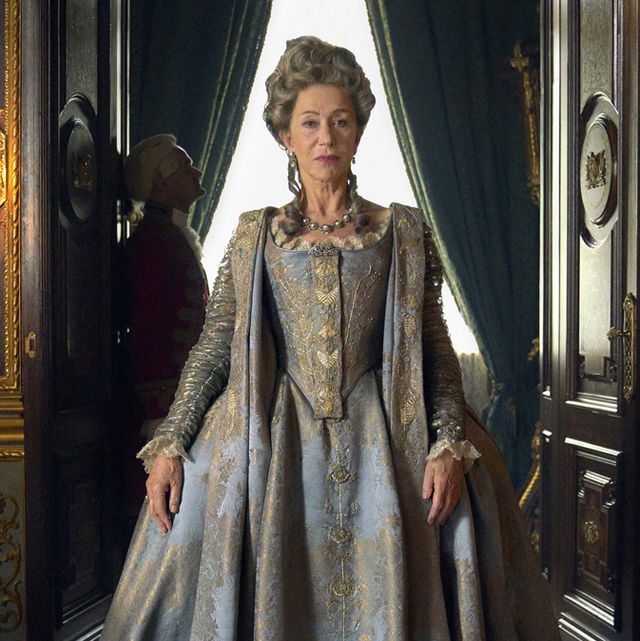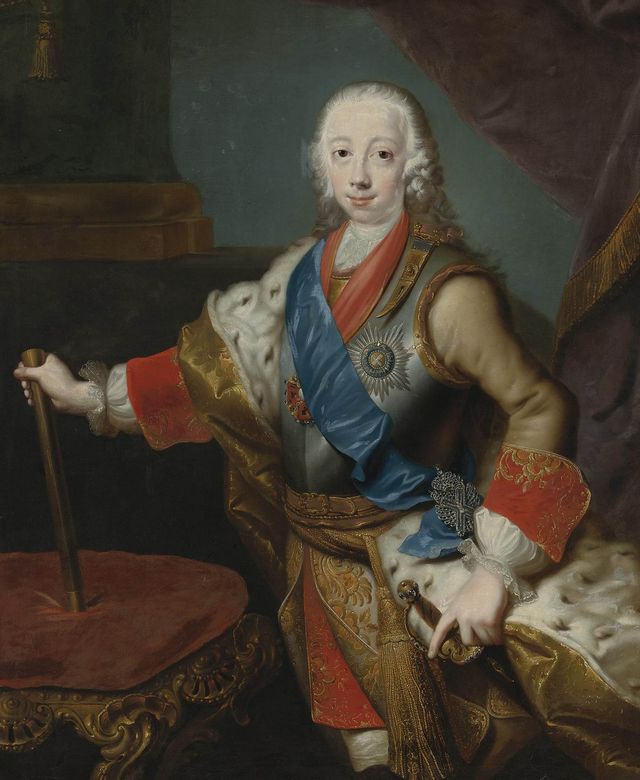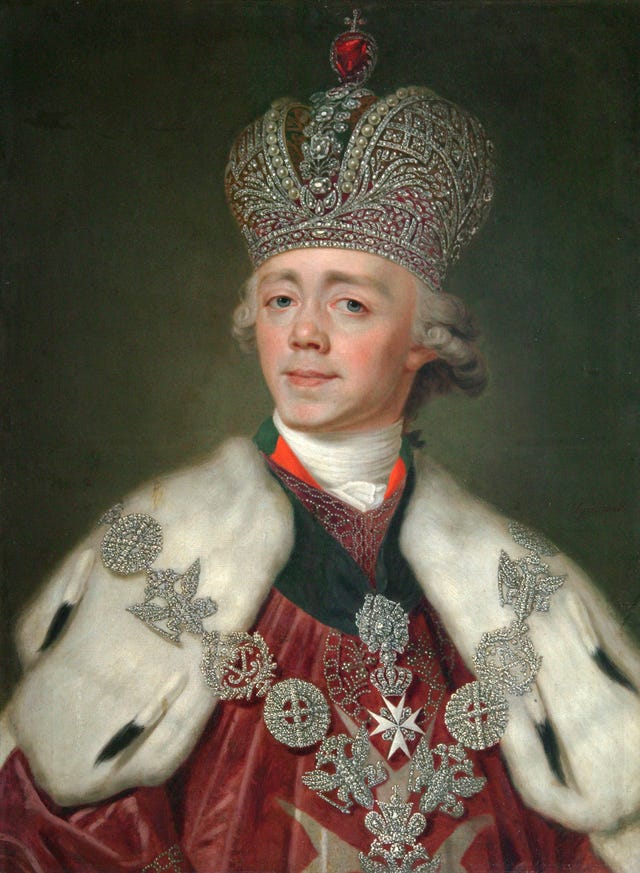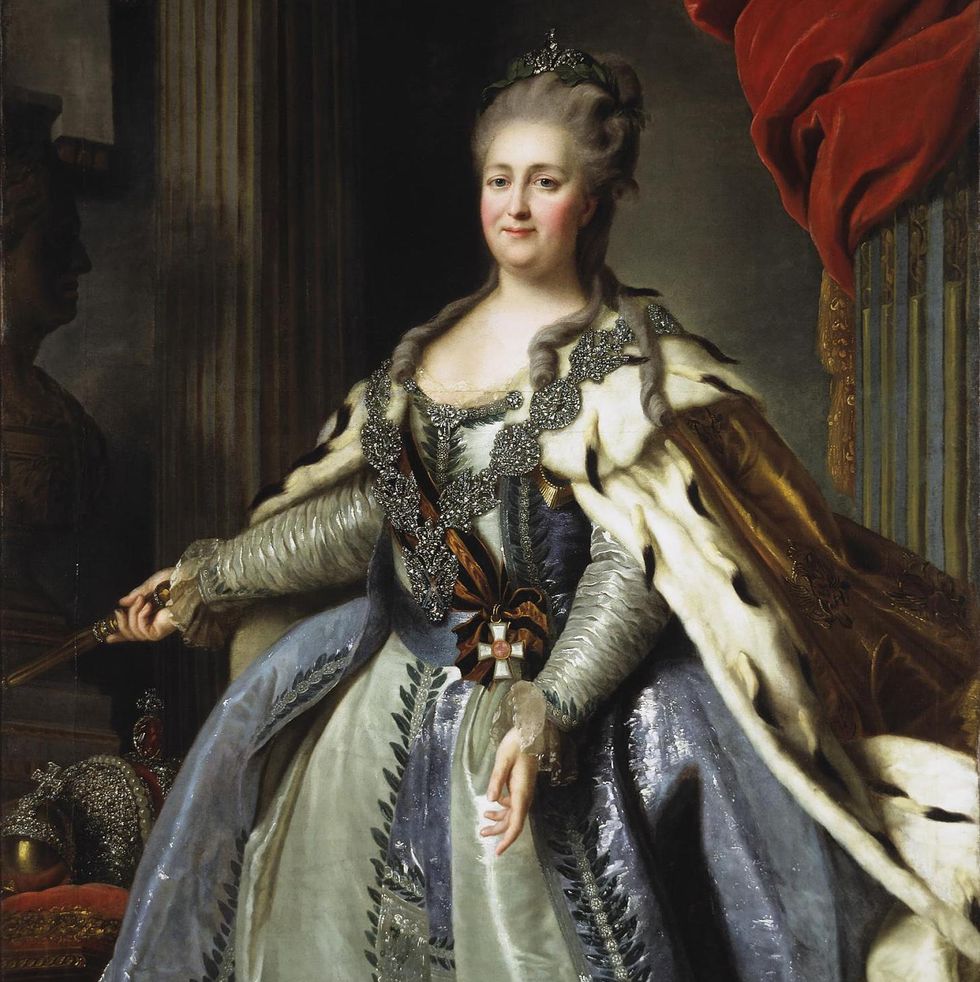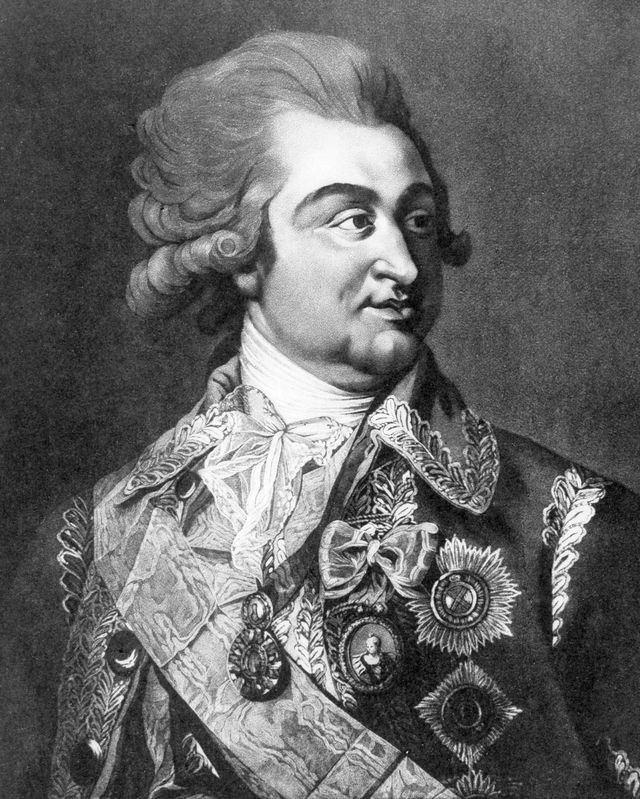Legends abound about Catherine the Great—the good kind and the bad kind. In the plus column, the longest-reigning empress of Russia transformed her empire into one of Europe’s great and enduring powers, annexing over 200,000 miles of land, building over 100 new towns, and fostering a golden age of development for the arts and sciences. However, Catherine wasn’t simply a great conqueror—she was also an enlightened intellectual and a forward-thinking trailblazer, a woman who championed vaccination, uplifted female artists, exchanged letters with leading philosophers like Voltaire, wrote memoirs, and penned the first works of children’s literature published in Russia.
Yet other legends are less savory (and less factual), namely the legends concerning Catherine’s infamous life between the sheets. Even in her lifetime, Catherine was known for her string of male lovers, many of whom were significantly younger than her, and some of whom reaped political and financial benefits from their arrangement. Yet thanks to misogyny, jealousy, and a poisonous court culture, Catherine was accused of practically every form of sexual deviance you can dream up--like bestiality, nyphomania, and voyeurism, to name a few.
With the monarch’s story hitting television in HBO’s Catherine the Great, we took it upon ourselves to sort fact from fiction when it comes to her personal life. Read on for the real story about how Catherine lived and loved.
Was Catherine the Great married?
Empress Catherine II of Russia was born Princess Sophie of Prussia (now Poland). In 1745, at the age of 16, she was married through a dynastic arrangement to her second cousin, the prospective Tsar Peter of Holstein-Gottorp. Upon her conversion to Russian Orthodoxy, she took the name Yekaterina (anglicized as Catherine).
The arranged marriage was a complete mismatch, largely due to Peter’s personal failings--Peter was neurotic, stubborn, and an alcoholic. Desperately unhappy, Catherine began to take lovers. Though Catherine gave birth to three children who survived to adulthood, some historians believe that Peter fathered none of them, likely due to impotence or infertility.
Did Catherine the Great kill her husband?
Probably not, though public opinion held her accountable for his assassination. Catherine came to power through a political coup against her husband that lately turned deadly. When Peter inherited the throne, he quickly ended Russia’s war with Prussia (as he was fanatically in thrall to the Prussian king, Frederick II) and sought to improve life for the working poor through domestic reform, alienating the military class as well as the nobility. Six months into his reign, when Peter left Saint Petersburg on vacation, Catherine met with the military, whom she implored to protect her from her husband.
Upon his return, Catherine ordered Peter’s arrest and forced him to sign a document of abdication. As the only heir apparent was the crown prince Paul, then a small child, Catherine acceded to the throne. Eight days later, Peter died at the hands of Alexei Orlov, younger brother to Catherine’s then-lover Grigory Orlov. No evidence exists to support Catherine’s complicity in the assassination, yet the Russian public by and large held her accountable, casting a shadow over her reign. Though Catherine’s detractors would argue that Paul should take the throne upon coming of age, Catherine squashed dozens of uprisings to reign for over three decades until her death.
How many lovers did Catherine the Great really have?
While some historians argue that Catherine took 22 male lovers, others claim that she had only 12 romantic relationships. Catherine loved to be in love, writing, “The trouble is that my heart is loathe to remain even one hour without love.”
Though the number of Catherine’s lovers is disputed, the nature of those relationships is not. Catherine aligned herself with generals, admirals, and wealthy nobles, forming relationships that were as politically rewarding as they were pleasurable.
What political favors did Catherine the Great’s lovers receive?
Catherine was unfailingly generous to her current and former lovers, often dispatching them with parting gifts at the conclusion of their time together. Such gifts included lands, titles, palaces, and even people—one former lover was dispatched with 1,000 indentured servants. Arguably the most handsomely rewarded of Catherine’s lovers was Stanislaw Poniatowski, whom she later installed as the king of Poland in a bid to maintain Poland as a loyal vassal.
Who was Grigory Potemkin?
Grigory Potemkin, whose romantic and political relationship with Catherine is at the heart of HBO’s new series, was largely believed to be the great love of Catherine’s life. Potemkin was a minor noble who distinguished himself through military service in the Russo-Turkish War, after which he began a sexual relationship with Catherine and became the most powerful man in Russia. In Potemkin, Catherine found her equal, an intellectual and ambitious man with whom she could share power as well as romance. Together they masterminded the colonization of southern Russia, annexed Crimea, and founded the Russian Black Sea Fleet, which became one of the most powerful naval forces in Europe.
Potemkin reportedly possessed “elephantine sexual equipment,” according to one biography of Catherine. Catherine allegedly had his “glorious weapon” cast in porcelain to provide companionship while Potemkin was away, though the artifact has yet to be located, which casts doubt on the story. Catherine called Potemkin “Golden Pheasant” and “Twin Soul,” writing to him, “I love you all the time with all my soul.”
Even after their relationship ended, Potemkin remained a favorite of Catherine’s, earning the title, “Prince of the Holy Roman Empire.” When Potemkin died of a fever at just 52, Catherine was distraught, writing to a friend, “A terrible deathblow has just fallen on my head…my pupil, my friend, almost my idol, Prince Potemkin of Taurida, has died…you cannot imagine how broken I am.” After Potemkin’s death, Catherine never found another great love, instead choosing handsome, young, and politically insignificant men as her lovers, one of whom likened himself to a “kept girl.”
How did Catherine the Great die?
She didn’t die fucking a horse, that’s for sure. The most notorious sexual myth about Catherine is that she was crushed to death by the horse with whom she was having sex. Other rumors claim that Catherine died while on the toilet. The reality is that Catherine suffered a stroke at 67 years old, then died peacefully in bed the following day.
Was Catherine the Great really a sexual deviant?
Stories about Catherine’s sexual proclivities are numerous—some have argued that she collected erotic furniture, that she was a nyphomaniac, that she employed a trusted countess to vet potential lovers by sleeping with them first. Though Catherine took a number of lovers, there’s little evidence to suggest that she had any deviant sexual proclivities. Catherine was famed for her sexual independence, but she was also the victim of a smear campaign by her envious and misogynistic male enemies--including her son Paul, who coveted the throne and sought to poison the court against her.
Progressive historians argue that many of the lurid stories about Catherine are vicious gossip spread by her enemies, which have now evolved into urban legends. After all, similar rumors of sexual depravity followed other powerful female leaders like Cleopatra, Marie Antoinette, Elizabeth I. Whatever Catherine was into, she was a singularly modern woman and a formidable ruler. Russia as we know it wouldn’t exist without her.
